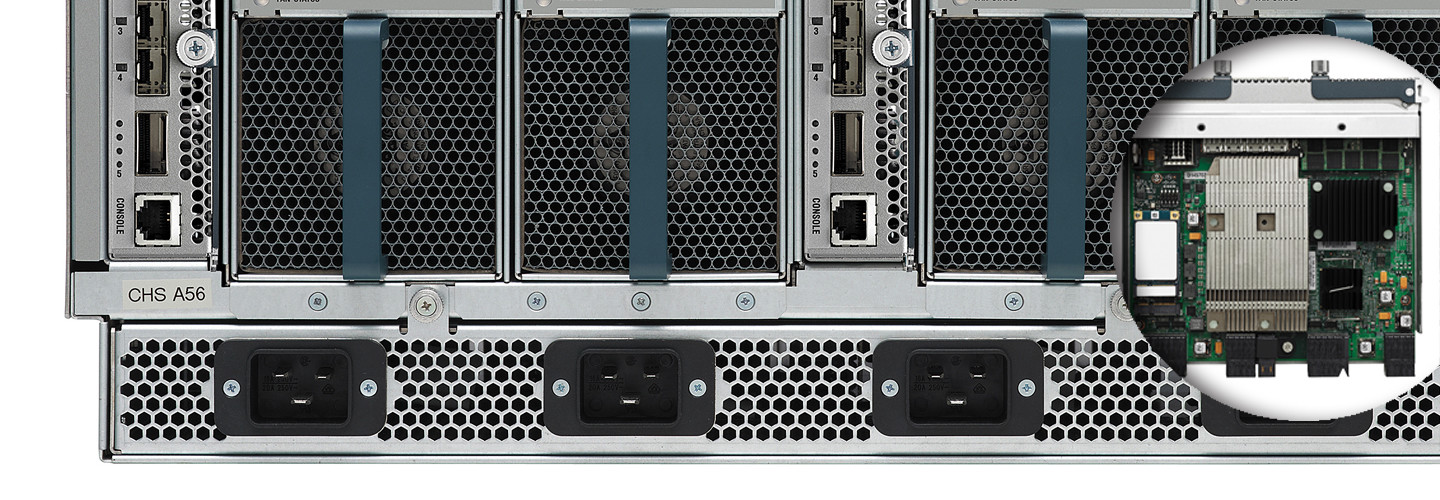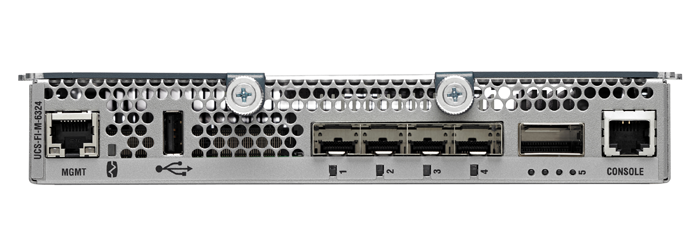Review: Cisco UCS Mini Moves Out of the Data Center
The Cisco UCS Mini is a total-package server solution that provides a remarkably powerful computing platform that comprises blade servers, a chassis and a switched fabric network interface. It’s designed for small to medium-sized businesses that need the power of a rack of blade servers without the IT resources to deploy them. The Mini’s management features and easy configuration make it perfect for branch offices located some distance from a main headquarters’ support staff.
The heart of the test unit for this review was a Cisco UCS 5108 Blade Server Chassis. It has the same modular design for components as the larger units; the only real difference is its support for up to eight half-width UCS B200 M3 Blade Servers. The chassis is 6U in size and features modular components, such as removable fans and a network module, which can be taken out and replaced without any special tools and without disturbing the blades themselves. It fits into a standard 19-inch rack or can be placed on a hard surface, such as a table or tile floor, when installed somewhere other than a traditional server room.
Because the cooling fans and other support hardware are at the back of the chassis in a separate module, a lot of room is freed up inside the actual blades. Up to 768 gigabytes of RAM can be configured along two racks, with six memory slots and two processors each, and with the standard load-out being Intel Xeon E5-2600 processors. Along the front of each blade is a space for two hard drives, which can be replaced without removing the blade itself from the chassis.
Hard-Wired for Success
The Cisco UCS 6324 Fabric Interconnect tying it all together also is engineered to operate in smaller, stand-alone environments. Cisco embedded the communication components within each blade server so that it can be simply snapped into place. It can support a domain of up to 15 servers, including the eight blade servers that can be loaded into the unit as well as seven more that can be connected directly to the rack.
The Mini has more than enough power to drive most web servers or transaction applications (which probably will be its primary use case). Because it’s expandable, it can also work easily with more processor- and memory-intensive applications, such as distributed databases, ERP or CRM.
Dummy-Proof Installation
Cisco Systems touts its new UCS Mini as a total-package solution that can be set up much more easily than a traditional server — it can even be upgraded by nontechnical staff without any downtime. To test this out, we took a UCS Mini with four working B200 M3 blade servers and used the UCS Manager software to configure two more. All of this was done while the unit was powered up and running.
Having added new blade servers to arrays in the past, I set aside two hours for the test process; in the end, the task required only 20 minutes.
Upon opening the console, the UCS Manager allows a profile to be created and saved for later use, assigned to any blade server slot. Once a profile is assigned, a technician simply inserts the new blade into a free slot on the 5108 Blade Server Chassis. Once inserted, the Mini recognizes the additional blade and begins to configure it, connecting through the 6324 Fabric Interconnect.
We were ready to record all of the various steps involved in installing more capacity into the Mini, but that’s where the task ended. The Mini processed both blades at the same time, and they were integrated into the total capacity of the machine in about 20 minutes.
The real strength of this unit is that installation can be performed remotely, just as easily. Administrators can simply assign new profiles to the Mini’s empty slots, then have the physical blade delivered to the remote office. Anyone in the remote office can simply insert the blade into an open slot to upgrade the office with the extra capacity it needs in about 15 minutes — all without having an IT person travel to the site.
Inserting tab A into slot B is about as dummy-proof as it gets and really helps the Mini to deliver the kind of performance and expandability normally found only within the most advanced devices now populating server arrays, deep inside data centers. Moving this power into a branch office or a small business is quite a feat and helps the Mini perform well above its class.
Cisco UCS Mini Specifications
Size: Main Chassis, 10.5x17.5x32 inches
Processor: 1 or 2 Intel Xeon processors, E5-2600 and E5-2600 v2 product family CPUs
Capacity: 24 DIMM slots; maximum of 768GB with 32GB DDR3 Load Reduced DIMMs
Storage: Up to 2TB; LSI SAS 2004 Integrated RAID controller; RAID 0 and 1 support
Simple: Management interface makes it easy to remotely maintain Minis at different locations from a single console
Flexible: Hot-swappable so extra capacity can be added as needed while the system is running
Fast: Backplane supports 1.2 terabytes per second of aggregate throughput









